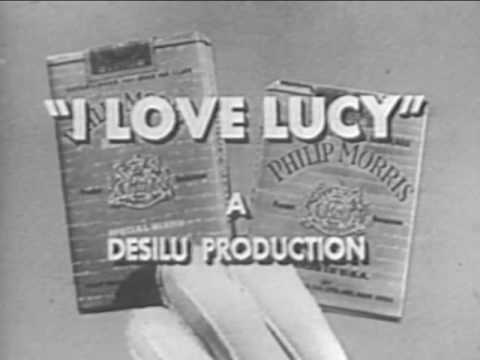Yes, the popular sitcom won the Emmy for best situation comedy for the second year in a row.
There's still a lot to love about the show going into its third season. By this point, the Ricardos are America's favorite family and that fame is commented on in a few ways. After Life magazine did a spread on Lucy and Desi, the Ricardos got a similar story done about them. And they used a real issue of Life onscreen, though of course the Ricardo story was a fake inserted by the prop department. Also of note, the back cover of that particular issue was a full-page ad for Lucky Strike cigarettes. The show was forced to do a fake back cover by the sponsor, Phillip Morris. Can't advertise the competition onscreen!
The Ricardos also now have a baby, and the series does a decent job juggling stories that do and don't involve parenthood (they conveniently have a neighbor to watch the baby whenever the plot calls for it). But of course this show was filmed pretty quickly without many reshoots and it's clear the twins playing Little Ricky do not like it! No Olson Twins, here; Little Ricky spends a lot of his screen time crying.
What I do want to single out in this season though is the music. Wilbur Hatch provides an awful lot of great incidental music. Of course, the series has always had good music in the club with Ricky's performances. The musicians in the club are great and Desi's a good performer. But there is a lot of incidental music in the series as well. We forget how much music there was in older television. Modern sitcoms might have a theme song and a guitar riff for scene transitions and that's it. But there is full orchestral score for I Love Lucy episodes. The best example of this is the dream pantomime sequence in "Ricky's New Girlfriend". The music is telling the story there, in a method very similar to what was popular in musical theater around that time.
One of my favorite moments of the season and perhaps the series was Ricky telling the story of Little Red Riding Hood in Spanglish to Little Ricky. It's hilarious. Worth noting as well if you look closely you'll see that in Little Ricky's crib he has a pillow or blanket with the cartoon images of Lucy and Desi from the opening title sequence.
As with last season, the show keeps seeking new ways to stay fresh. They had a few more celebrity guest stars. This included up-and-coming entertainer Tennessee Ernie Ford as Lucy's cousin (not actual relation, but it's complicated). He stays for a multi-episode arc. Is this the first two-parter in sitcoms? It also reminds me of a story arc on Friends which also featured a horrible roommate named Eddie who wouldn't leave. There was also an episode about redecorating the Mertz's apartment, which ultimately led to the Ricardos buying new furniture (again!). It seemed clear to me that this redecorating tactic was starting to wear itself out and they would have to look to other ways of shaking the show up. At the end of the season, we are teased with that possibility: the cast going on vacation and subleasing their apartment in the meantime. Later seasons will take the family on road trips and ultimately they will move out of that apartment for good. For a series that only ran 6 seasons (before morphing into a short-lived spin-off which is often counted as the later seasons of the show), they never stayed in the same set too long. Long-running sitcoms don't always seem to have this much shake-up in the environments today, but there seemed to be a concerted effort here to keep things different.
For all the good in this season, I don't think it is as strong as season 2 was. It's starting to feel its age, and the addition of the baby both helps and hurts it. There are still very good episodes and funny moments, but fewer outright classic ones. There are things that date the show a bit. I particularly noticed how often Lucy responds to Ricky with, "Yes, sir." Can you imagine that flying today without angry protests? But there are also some hilarious moments like the entire "Equal Rights" episode that I think in some ways still hold up. The girls object that women are treated the same as men, so Fred and Ricky agree to treat them the same as men for a lark. The women almost immediately are put off by the things they expect to be done for them (getting their coats, pulling out chairs, letting them order first), the preferential elements of society, are gone. It's a good conversation starter.
Though worth noting, during this season they re-broadcast "Lucy Does a TV Commercial", and not with the flashback structure employed in season 2. That probably makes this the first true re-run.
FAVORITE EPISODES: Ricky's Life Story, Equal Rights, Lucy Tells the Truth, Too Many Crooks, Ricky Minds the Baby, Sentimental Anniversary, Home Movies, The Black Wig
UP NEXT: Make Room For Daddy
Blood and Chrome
9 years ago

